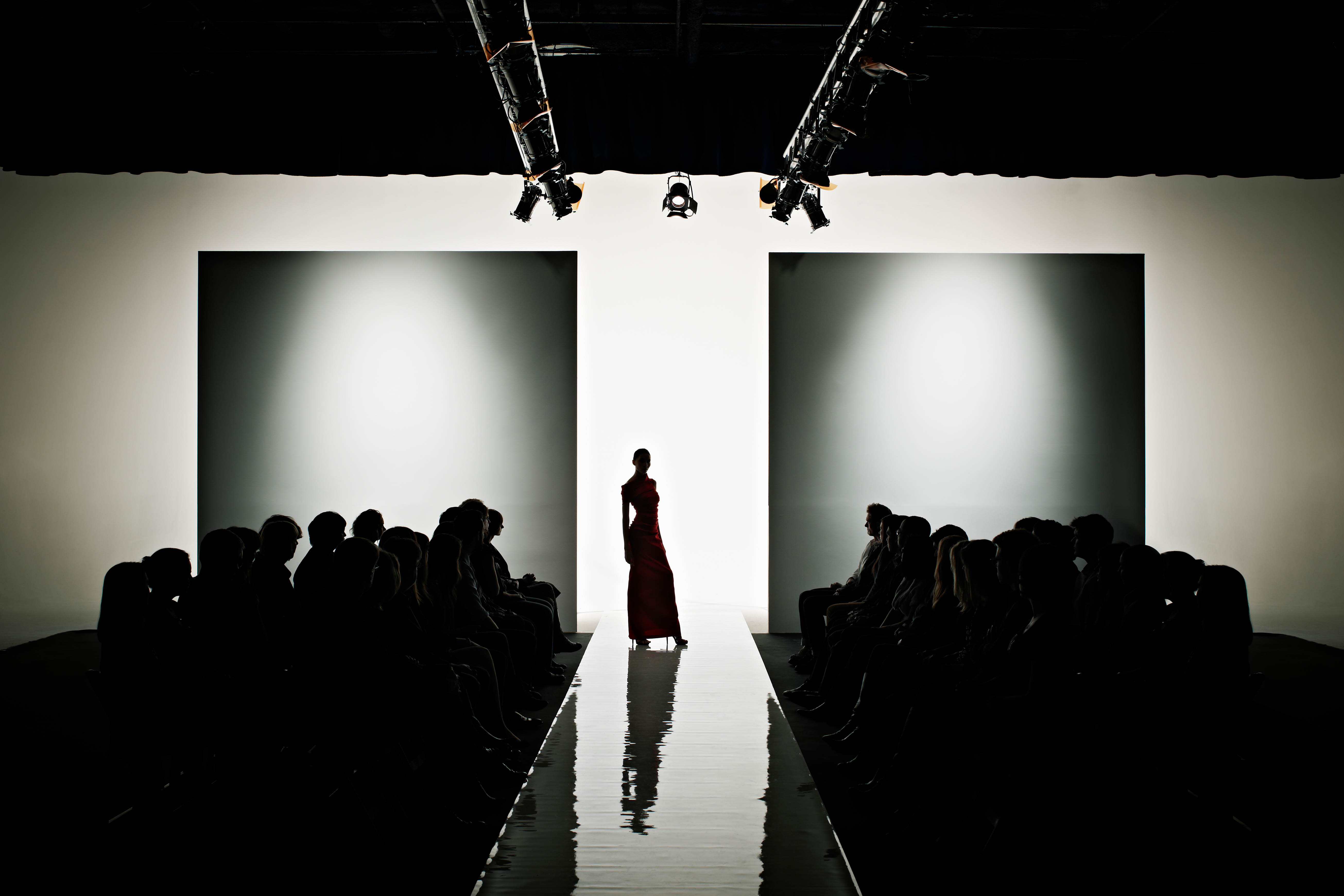They call it fashion week, but really it’s a whole month, twice a year, where the entire fashion industry gathers, first in New York, then London, Milan and Paris to see the new collections. Each designer presents a show where models walk their clothes past editors and buyers; the intention of this theatre is not just to sell the dresses, but tell a story about the world these dresses will enter. Last week, I met a fashion editor who had just returned from the shows and she looked, honestly, haunted.
A report had been released by Vogue Business, collecting data from 198 fashion shows that confirmed 97% of models on the catwalk this season were a size 4 to 8. This, bearing in mind the average dress size in the UK is a 16. None of this was news to my fashion editor friend, of course, who has worked in the industry for 30 years. And yet still, this year’s fashion weeks have clearly shocked her. She described one show where the models’ bodies were so thin, “there was nothing for the clothes to hang off”. Another designer showed cutaway tops revealing rib cages and clavicles. Because the models were so thin they didn’t have breasts, and “I saw them pulling the fabric of the dresses over their exposed nipples.”
The staging contributed to her unease. One dark-lit show had very thin models walking in a circle, looking blankly into the eyes of the buyers gathered. “And it made me think, immediately, of trafficked women, parading their bodies, not the clothes. It felt like each one could have had a number on their wrist. It’s the first time in decades of shows that I’ve felt this uncomfortable.”
Vanessa Friedman, revered fashion critic for the New York Times, responded to the season with an article headlined: Why Can’t Fashion See What It Does To Women? She referenced clothes that “suggested suffering and entrapment were the cost of participation,” and a Valentino show that “undermined the sophistication” of the clothes “by putting them on models so skinny they looked starved.” She added: “For designers not to consider what they are saying is wilfully ignorant at best, disingenuous and even damaging at worst.”
It wasn’t just my friend who felt uncomfortable. Elektra Kotsoni, deputy director of Vogue Business, said: “I have never heard more female editors complain loudly about how skinny the models were in my time going to fashion weeks.” In a million ways this is deeply unsurprising, but at the same time, disappointing. Any efforts to increase body diversity in fashion appear to have tanked. Earlier this year, Next had a jeans advert banned – the Advertising Standards Authority said the model’s pose emphasised the thinness of the model’s legs and deemed it “irresponsible”. In July, Marks & Spencer had to remove an ad because the ASA judged the model pictured in it to be “unhealthily thin”. A few weeks later, Zara was forced to do the same.
A fashion editor told me, in the low voice of a person quite done-in: ‘Editors at London Fashion Week had dropped two sizes by Paris’
There is certainly a conversation to be had about models’ health, one that’s been rumbling on for years, in tones that pivot between outrage, boredom and disgust. But the models are just canaries. Much of what fashion is for is to reflect our world back at us, draped lightly in fantasy. In the same way that a designer chooses a precise shade of green for their shirts, so are they intentional about the models they cast. And this year, their models are getting thinner because they’re mirroring the customers seated before them.
Part of the Vogue Business report surveyed readers, of whom 48% said they “feel pressure to lose weight in order to feel fashionable”, while 13% had used weight-loss drugs. These are, typically, healthy people whittling themselves down to avoid the presumed failure of appearing fat. Another fashion editor told me, in the low voice of a person quite done-in: “Editors at London Fashion Week had dropped two sizes by Paris.”
The slide towards extreme skinniness in fashion seems increasingly in line with contemporary politics, which lean toward the right at ever-more-dramatic inclines. Diversity in bodies and conceptions of beauty are being briskly disappeared, along with any sense that women might break out of the regressive and painful patterns designed for them. And yes, while the industry reflects, it also influences – as catwalk shows become mainstream entertainment, those of us scrolling at home see images of beautiful bodies shrinking and understand that the value of a woman increases as their weight decreases.
The body positivity movement has failed, partly that’s because it was so swiftly co-opted by brands, who immediately replaced the quest for thinness with “wellness” or “empowerment”, but also because it put all responsibility for that positivity on the individual, rather than the sexist, fatphobic structures that led to their violent relationships with their body. And because, in asking people to look inward to find beauty, it allowed everybody to avoid looking out. Avoid thinking about how they treated others, especially while weight-loss drugs offer an illusion of a world without fat people in it.
And meanwhile in fashion, there is a whole industry of artists without enough creativity to imagine a size-16 woman.
And another thing… Keith Haring hoodies, true crime, and chic sweets
Recipe for murder
The Mushroom Tapes is a new book that takes on Erin Patterson, convicted in July of murdering three of her former in-laws and attempting to murder a fourth by serving a beef wellington contaminated with death-cap mushrooms. The authors attended her trial and shared “long days immersed in the case’s themes: love, hate, jealousy, revenge, marriage, money, mycology and murder”.
Classy cubes
Selfridges has launched a range of Italian chocolate (cioccolato) I’ve been admiring as much for its elegant packaging as its elegant taste. These pastel-coloured boxes and tubes contain cubes of, for example, hazelnut gianduja with salted almonds.
Artful designs
A book about Jean-Michel Basquiat asks whether he’d have liked his paintings appearing on all this merch. The writer, Doug Woodham, compares him to Keith Haring, ‘The first artist to realise he could put his motifs on a keychain and sell it at pop-up shops, knowing that it wouldn’t hurt his value’. Which brings me to Absolut Vodka, whose 80s partnership with Haring is now a considered collab with luxury streetwear brand Aries. The hoodie is fun.

